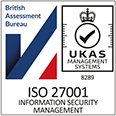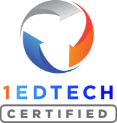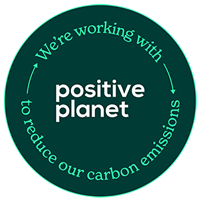Anthony Rendall, Kaori Yokochi, & Sharon La Fontaine from Deakin University on ‘Scaffolding and scaling career education and WIL’.’ This recording is from our 2022 Melbourne, Australia MiniBash community event. Videos are for educational personnel only and require a live educational email to watch. You can read the video transcript below.
Transcript:
I’m gonna start off here.
So the The the attention of this slide is to set the context for for this presentation. So so in a collaboration, but we’d have faculty, science engineering and built environment at Deakin, and at Deakin’s graduate employment division.
We’re all about what we’re calling the stepping stones framework for career planning and career development learning across all of the other graduate courses in our faculty.
And so the value of paid work for enhancing employability is well recognized by, I’m sure everyone in this room and and others.
And so so this is a this is a graphic that we use in the classroom.
Where where students which we’re calling the stepping stones framework. And encourages students to to leverage the the skills that they’re they’re gaining from their current role to get into their next role. And it’s building the skills and experience that they need eventually to get into their ideal graduate role.
The the whole aim of the stepping stones framework was designed to get students into any form of paid work from day one. So hence, leveraging whatever their whatever their current casual job is. First year, it might be McDonald’s or whatever it is.
But to support this, they need the they need a strategy to develop the skills and knowledge to to actually be able to identify an ideal graduate role to be able to identify what we’re calling stepping stone roles, and then to be able to apply apply for them, So the curriculum content consists of four competency clusters, which is what we’re calling the stepping stones career planning and building experience.
We’ve got developing a career narrative and awareness of their own interests, skills, values, etcetera.
Researching employers, job roles, building their networks, and then navigating the recruitment process. And so students engage with these with the curriculum at year one, two, and three of their degree in an iterative and reflective process. And in doing so, build the skills and knowledge to equip them at the foundation emerging in developed levels.
To get into more relevant to get them into more relevant paid roles.
And so in doing this, they’re modeling the career management process that they’re gonna need for beyond their beyond their degree.
And I’ve been working with colleagues, Anthony, and across our school, but also in particular, Anthony and Kaori, and they’ll present how we’re using Pelt and in this context across our undergraduate courses and over to Kaori, Thanks. Thanks, Sharon.
Alright.
So I’m Conservation Lecturer at School of Life and Environmental Science at Deakin. And I look after in terms of this career education kind of real, I look after first year students in environmental science. And this is the unit that I checked called foundation for environmental science. And vast majority of students to this unit in their first trimester because it’s a trimester system.
First trimester, first yeah. So this is one of the very first units that students take. So really, the idea of this unit is to give them that foundational, you know, knowledge skills that they need in environmental science, but also to kinda support them, adjust to the university life. And, you know, the way we run things, the way they have to do the assignment and so on.
And so about one of the major, I guess, aim that we have in this unit or in other words, the unit learning outcome is actually the career education. So we want students to be able to identify their potential career pathways, I guess. Based on their own reflections of their interest, values, and also strength, and then develop a strategic plan for their time that they have at university. So that when they graduate, they’ll be able to go for that job that they really want to.
So to do this, we provide students with of online materials that they need to work through on their own in that unit and our site. So that’s quite that’s very aligned with the career education package that the CB and also digging talent has provided. And then we have three hour kinda seminar with students, which I run with friend.
In that, we kinda go through these ideas of, you know, stepping why it’s important to, you know, start thinking about career. At the beginning of your university life. And also, this is kinda where we try to draw this up because most of the students coming in to environmental science. They’ll say, I wanna be park ranger.
And we ask them, you know, what do you even know what park rangers do? They’re like, I don’t know, work with animals in nature. So we kinda try to problem this go and show them different pathways even and kinda get them to realise there are lots of different options and then start looking at their own interest values and what might, you know, which actually might align with with their own values and then look at their own skills. What do they already have?
It doesn’t all have to be your technical skills. And then, from then on, look at the potential job at the age, so we actually get them to look up like, a position description for the graduate level role, and then identify what kind of skills they would need to actually apply for those jobs.
Then from then, get them to kinda develop their individual plans for their three years, including uni state should be taking but also extra curricula.
Programs.
And then they will have this assignment.
For a lot of them, this is one of the, you know, the very first, big assignment that they would do at university.
And this is where we use the platform, the PebblePad.
So just quickly, before they go into, you know, using PebblePad, this would be the very first time that they will come across pebble pads. We do provide a lot of support materials to students. So these two just a screenshot of their unit site. One of the pages in unit site, it’s actually talking about what PebblePads why we’re using pebble pat, why it’s great. You know, it’s so flexible and so and we really trying to sell it as a tool that they can use rather than the tool that we use for assessment so that they can kinda own and start using it on their own. We provide them videos, you know, short videos on how to actually access Pebblepad and, you know, actually show them the workbook And then, also, we provide them with a very detailed instruction on the assessment and the tasks that they need to do.
So these are very quick screenshots again of the actual workshops that are not workshops, workbooks that we use. So it has a lot of different components. Like I said, we want them to do a lot of different tasks so that we start with what’s your value, you know? What’s your interest?
What’s your strength? And then we get them to do what we call this skills audit. We get them to see, reflect and see, okay. This is the skill I already have.
Or this is the skill I want to develop. And then we want them to actually look at the job and see what kind of skills they need.
So for example, skill zone, we’ve just use what’s available, the function available on paper part. So this is where students actually just tick boxes. So it’s done by a table, but students are just taking success is that kinda list of very, you know, like, transferable skills that any job will probably need. And we get them to tick.
You know, do you have ability this? Are you confident? I do feel comfortable. And so it’s a really We make it really simple.
And then we also have, you know, going through PDs. They have to provide evidence, so they have to take screenshot of the PD that they’re looking at and paste it in here and so on.
Then like Sharon said, we provide them with a stepping role, stepping stone model and they get them to start to plan their university like Then on top of that because to get a job or even the volunteering experience, which is actually really important in environmental science, They need to apply for it or they need to talk to their employer. So we start teaching them professional communication at this stage as well because, you know, they’ll be sending our emails to path’s Victoria, whatever it might be, they need to be professional. So we start from there.
So we use PebblePad for this because Everything can be in one place. Right? We don’t have to have different documents that students need to access or anything. You just need to go to one link.
Every way, find it that it’s less overwhelming for the first year students especially because it’s, you know, you’re doing one task at a time and kinda getting it done. And I actually run a survey to students who took my unit out of five how do you rate, you know, the usability or you know, easiness. I guess ease of use of pebble patch and I get forty four point one to forty four a four point four star out of five. So they do find it quite easy.
And simple to use, which is what we want.
And the thing is we keep telling them, you know, this is your stuff.
You need to be you know, you can and you need to be you should be kinda improving it, you know, keep adding it to it and, you know, we really want them to own this process because it’s not just assignments. Right? It’s actual their career planning. So we try to make it student led And we also provide some templates.
So I provide this template, for example, that they can use for any placements or any volunteering experience that they do. So that they can kinda keep, I guess, time of what they have been doing, what they have learned, and what they wanted to get out of it. So so that they can come back to it, for example, when they apply for a job and then get examples from this, for example. And it really makes it easy for us to scaffold.
Between e levels, e levels, especially.
And at this point, I’ll pass it on to Anthony who’ll be talking about third year of the ball.
Thanks. Thanks, Carrie.
So similar to to these two, I’m a lecturer at Deakin, and I teach our third year unit. So there’s a second year point that follows on from Carrie’s unit, and then they all come into a a large thirty year unit, which sits across the entire school, which is really about how we then take what they’ve learned through their degree, the skills they’ve developed, and actually apply that to the real world. So as a part of this unit, They’ll actually go on a professional interview. We send them to home and recruitment.
They also do a professional job application for a real world position description. We pull off the web a couple of weeks before the unit starts. So it’s a really authentically based foundational unit. They also go out and do an integrated work integrated learning placement with industry and we’ve built a whole range of different industry partners.
So it’s really building that employability scope. But as you can see, PebblePad sits really nicely for us in terms of the scaffolding approach. We actually get the students to go back to this skills order. The Kaori gets them to do.
We often find they think they’re less employable, as we said earlier today. But we find that’s a really important thing for them to acknowledge at this point in their learning so that we can essentially debug that theory that they’ve become less employable through a degree.
We also use it for more authentic engagement from students, and we use it to engage external assesses. And this is essentially what I’m gonna talk about.
And as has already been mentioned, the student driven element of this this platform is is really what’s really critical. And I think one of the things there was the question earlier around how do you get students who say they don’t wanna do a portfolio or actually engage in doing a portfolio. And quite often when I talk to some students who who aren’t as engaged, They sort of go, oh, well, I was looking for marks. And they’re very marked driven, particularly within the sciences.
They have a lot of desire to get the higher marks and and to go on that way.
And so the ability to make things private has been really really valuable for us to go. Actually, I don’t actually care what you say. Just want you to say something. I want you to reflect.
I want you to think honestly about where you are in your career. This isn’t actually for Marx. It’s formative. But do it, please.
Make it private if you want, and I’ll never see it in my entire life. So it provides a really good capacity for that to be possible. For the students and I find an increased level of engagement and authenticity in terms of the way that they’re thinking about their future careers.
The third thing, and the external assessor component is really a game changer for us. One of the key challenges that we encountered when we started looking at will and the expansion of will. We have a school that that sits across environmental sciences, bachelor of science, biomedical science, forensic science, zoology.
And current in one unit, we’re teaching all of them. And so every year, we’ve got in the vicinity of eight hundred to a thousand students going and doing external placements. They’ve got they’re doing external interviews. And so they became this real challenge of logistics.
How do you feasibly make that possible? Because office in work integrated learning, as most of you will know, is a highly involved teaching style. It’s not like a regular unit. It’s something that is more involved.
You get engaged with the students in terms of having those conversations. You’re essentially career adviser as well as an educator at the same time. And so, I essentially sat down and started having conversations at the university going, I’ve gotta make this more efficient. And Tara, who’s here today was the person who introduced me to Pebblepad.
And I sat down with Joe Elliott, one of the deacon leads of PebblePad, who’s hello, Joe. I don’t think I’ve met Joe in person because we had all these conversations over COVID zoom.
But I grilled Joe for a good half an hour, I reckon, if not longer on well, will it do this? Will it do Will it do this? I need to be automated. I need this to happen. I need this to happen. Because I was pretty hesitant to dive into a new platform until I knew it was gonna do everything that I wanted it to do.
Joe sat there for half an hour and said yes to every single thing that I could possibly conceive in my head. And I went, oh, damn, I’m gonna have to use this platform.
But what it’s enabled is is really enabling us to make this more efficient from an educational perspective, and that’s really been my role in a lot of this development is making this feasible and scalable at this level. And so with our interviews, for example, we engage external consultants, but through PebblePad, we can engage external people into our platform. They can mark people in our own what we design into Pebel pad, they can mark into our rubrics for us, and those rubrics can directly feed into our cloud system on the unit site. When I went to deacon the first time to say, hey, can I get someone else? A a non deacon staff member, a unique account. They went, oh, no. Privacy, security, never gonna happen.
So this was a game changer for us to make that possible.
But one of the challenges became, but then what about placement? I’ve got over three hundred units in my unit, and Sharon teaches the other half of it. But eight hundred to a thousand students a year going to goodness knows how many different placements, in hundreds of different organizations, with hundreds of different supervisors, We can’t possibly upload all of these different assesses into the unit site in any one time to be able to get authentic assessment from our placement supervisors.
But PebblePad has a solution for this too. And this is, again, a student driven component. It’s putting the student in power of their learning. It’s putting the student in power of where they’re going in their careers.
And the student actually has the capacity to share whatever they want from PebblePad to whoever they want. And so we actually have the capacity now well, this field is gonna be completed by an assessor, and you’re gonna nominate that assessor. And that assessor is gonna be the supervisor that you’re working with on your placement. And so it puts the the the professionalism, the requirements, the time Timing into the students’ hands.
It takes an administrative load off and I don’t want that to sound like we’re just making this gin do all the work for us. But essentially, what it is is it’s making it feasible at scalable level so that when you start talking about, well, every student at university has to do will, this is how you can make it a reality. Because the reality is that you can’t have staff member sitting there administratively doing all of this work because the university won’t fund it. Our faculty no worries.
Our faculty.
Our faculty asked Sharon and I to actually say, how how much would it take to to fully fund the whole school in terms of WIL? And we said, while you’d need all of our workloads plus two additional staff members workloads.
So if you can hire them, that’d be great. We’ll do it. And they would not So so we need platforms like PebblePad to make it possible. And so I’ve I’ve been critical. I throw random questions at Jodie all the time. And they always come with answers. And so it’s it’s that platform that enables the flexibility to make what we are conceiving, I guess, today in this sort of mini bash, but also thinking about in terms of employability will it makes it feasible at the scale we need to get it at to make it possible moving forward.
Scaling real mosquito automation. I’ve talked about most of this and forgot about my size.
So we focus more and and essentially what this means is we can focus more on student support and that career education focus that they really need that authentic city rather than necessarily focusing on the administrative requirements behind the role.
Thank you.







